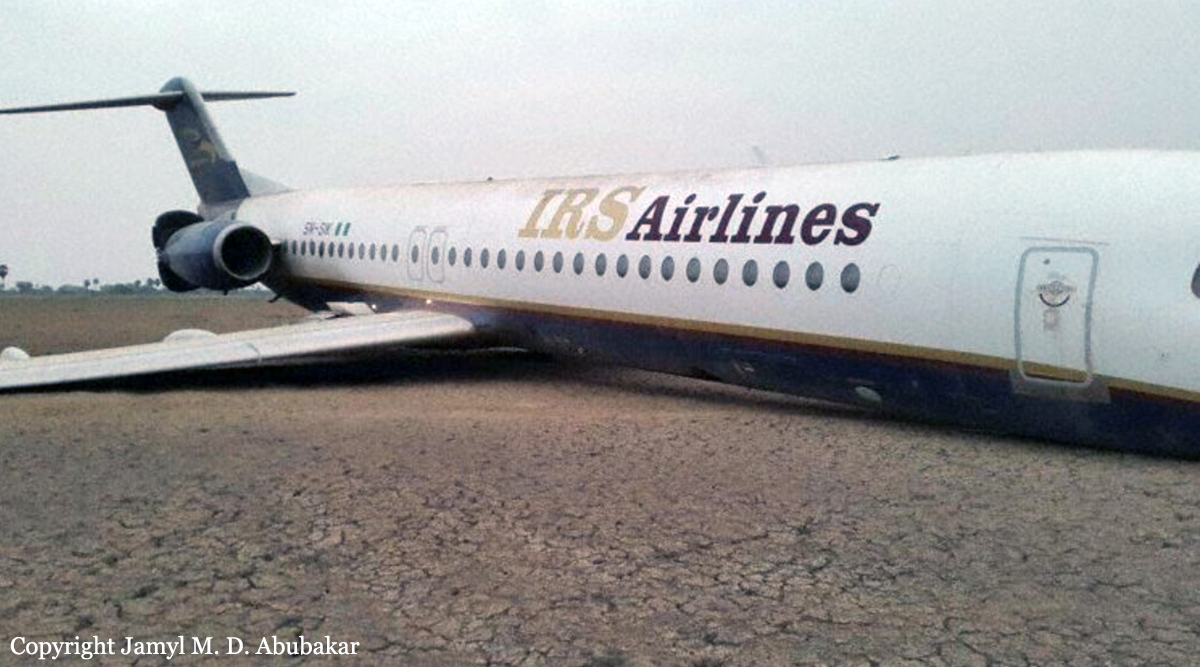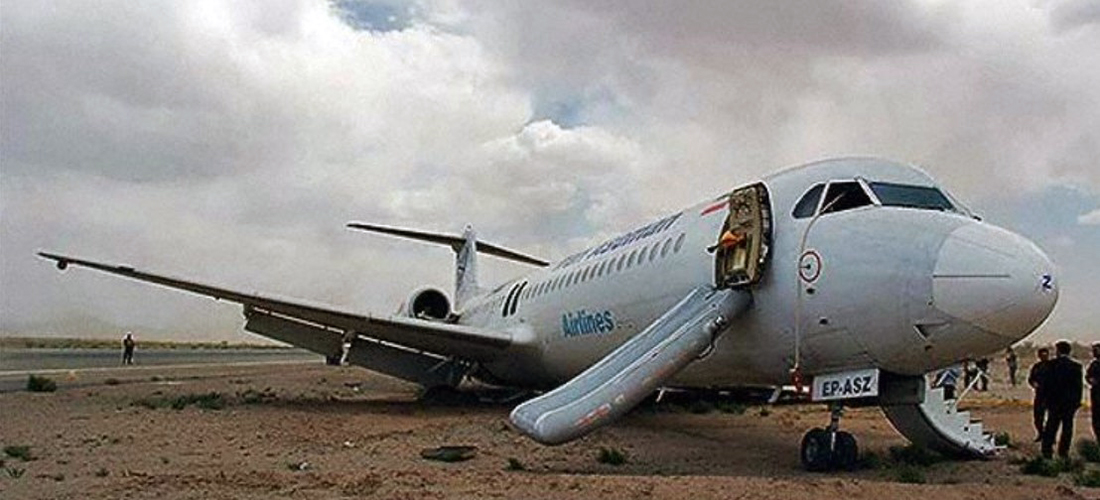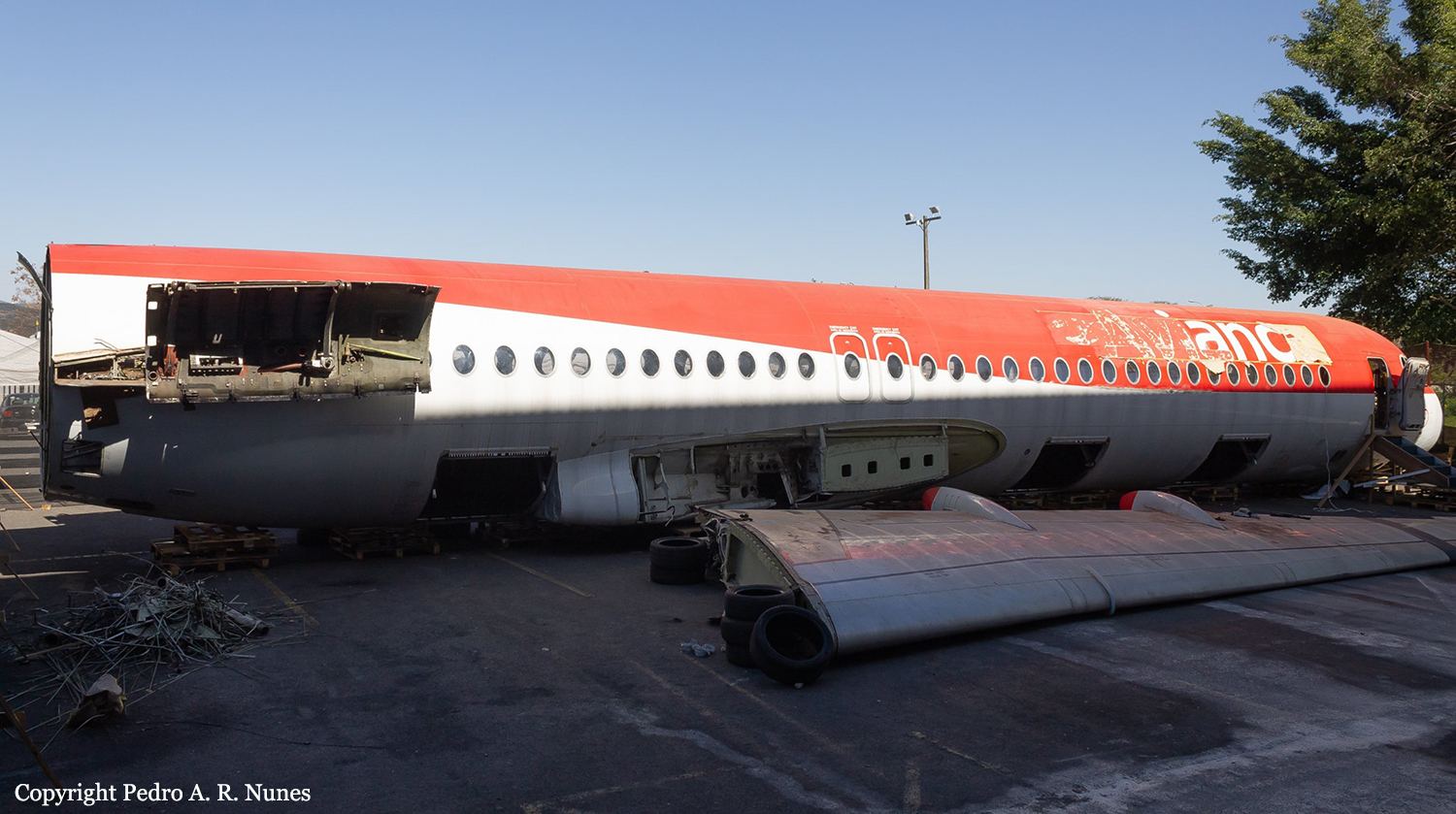Country
Crash of a Fokker 100 in Ganla
Date & Time:
May 10, 2014 at 2000 LT
Registration:
5N-SIK
Survivors:
Yes
Schedule:
Bratislava – Ghardaïa – Kano
MSN:
11286
YOM:
1989
Crew on board:
2
Crew fatalities:
Pax on board:
0
Pax fatalities:
Other fatalities:
Total fatalities:
0
Circumstances:
Following a C-Check at Bratislava Airport, the aircraft was returning to its base in Kano, Nigeria, with an intermediate stop in Ghardaïa. While flying over the Niger airspace, the crew was in contact with Niamey ATC when he apparently encountered poor weather conditions (sand storm) and lost all communications. The exact circumstances of the accident are unclear, but it is believed that the crew was forced to attempt an emergency landing due to fuel shortage. The aircraft landed in a desert area located in the region of the Ganla beacon, south of Niger. Upon landing, the aircraft lost its undercarriage and slid for few dozen metres before coming to rest. Both pilots evacuated safely and the aircraft was damaged beyond repair. The wreckage was found about 190 km north of Kano.

Crash of a Fokker 100 in Zahedan
Date & Time:
May 10, 2014 at 1300 LT
Registration:
EP-ASZ
Survivors:
Yes
Schedule:
Mashhad - Zahedan
MSN:
11421
YOM:
1992
Flight number:
EP853
Crew on board:
5
Crew fatalities:
Pax on board:
98
Pax fatalities:
Other fatalities:
Total fatalities:
0
Circumstances:
On approach to Zahedan Airport, the crew followed the checklist and configured the aircraft for landing when he realized that the left main gear remained stuck in its wheel well. The crew abandoned the landing manoeuvre and initiated a go-around procedure. During an hour, the crew followed a holding circuit to burn fuel and also to try to lower the left main landing gear but without success. Eventually, the crew was cleared to land on runway 35. After touchdown, the aircraft rolled for about 1,500 metres then veered off runway to the left before coming to rest in a sandy area. All 103 occupants evacuated safely and the aircraft was damaged beyond repair.

Crash of a Fokker 100 in Brasília
Date & Time:
Mar 28, 2014 at 1742 LT
Registration:
PR-OAF
Survivors:
Yes
Schedule:
Petrolina – Brasília
MSN:
11415
YOM:
1992
Flight number:
OC6393
Crew on board:
5
Crew fatalities:
Pax on board:
44
Pax fatalities:
Other fatalities:
Total fatalities:
0
Captain / Total hours on type:
3060.00
Copilot / Total hours on type:
2844
Aircraft flight hours:
44449
Aircraft flight cycles:
32602
Circumstances:
The aircraft took off from the Senador Nilo Coelho Aerodrome (SBPL), Petrolina - PE, to Presidente Juscelino Kubitschek International Airport (SBBR), Brasilia - DF, at 1752 (UTC), in order to complete the scheduled cargo and personnel flight O6 6393, with 5 crewmembers and 44 passengers on board. During the level flight, thirty minutes after takeoff, the aircraft presented low level in the hydraulic system 1. The crew performed the planned operational procedures and continued the flight to Brasilia, with the hydraulic system degraded. During the SBBR landing procedures, the crew used the alternative system for lowering the landing gears. The main landing gears lowered and locked, the nose landing gear unlocked, but did not lower. After coordination with the air traffic control, the aircraft was instructed to land on SBBR runway 11R. The landing took place at 2042 (UTC). After the touchdown, the aircraft covered a total distance of 900 meters until its full stop. The initial 750 meters were with the aircraft supported only by the main landing gears and the last 150 meters were with the aircraft supported by the main landing gears and by the lower part of the front fuselage. The aircraft stopped on the runway. Substantial damage to structural elements of the aircraft occurred near the nose section. The evacuation of the crewmembers and passengers was safe and orderly. The copilot suffered fractures in the thoracic spine. The other crewmembers and passengers left unharmed.
Probable cause:
The following findings were identified:
- It was found that there was a restriction on the articulation movement of the right nose landing gear door and that the weight of this landing gear was not sufficient to overcome such restriction.
Upon inspecting the hinges, it was found that there were no signs of recent lubrication, allowing the hypothesis of occurrence of any deviation or non-adherence to the inspection and lubrication requirements established by the manufacturer leading to a the scenario favorable to the right door movement restriction. The issue of the maintenance could also be related to some deviation, or nonadherence to the requirements established for the service of widening the holes of the hinges concerning the coating and corrosion protection of the worked surface. As a result, the area could have been more susceptible to corrosive processes.
- The maintenance program, established by the manufacturer, may have contributed to the occurrence by not establishing adequate preventive maintenance parameters for the landing gear doors that were modified by reworking the hinges, incorporating larger radial pins and widening the lobe holes.
- It was not possible to determine the causal root of the EDP1 gasket extrusion, which caused the leakage of hydraulic oil that caused the hydraulic system 1 to fail.
- It was found that there was a restriction on the articulation movement of the right nose landing gear door and that the weight of this landing gear was not sufficient to overcome such restriction.
Upon inspecting the hinges, it was found that there were no signs of recent lubrication, allowing the hypothesis of occurrence of any deviation or non-adherence to the inspection and lubrication requirements established by the manufacturer leading to a the scenario favorable to the right door movement restriction. The issue of the maintenance could also be related to some deviation, or nonadherence to the requirements established for the service of widening the holes of the hinges concerning the coating and corrosion protection of the worked surface. As a result, the area could have been more susceptible to corrosive processes.
- The maintenance program, established by the manufacturer, may have contributed to the occurrence by not establishing adequate preventive maintenance parameters for the landing gear doors that were modified by reworking the hinges, incorporating larger radial pins and widening the lobe holes.
- It was not possible to determine the causal root of the EDP1 gasket extrusion, which caused the leakage of hydraulic oil that caused the hydraulic system 1 to fail.
Final Report:




